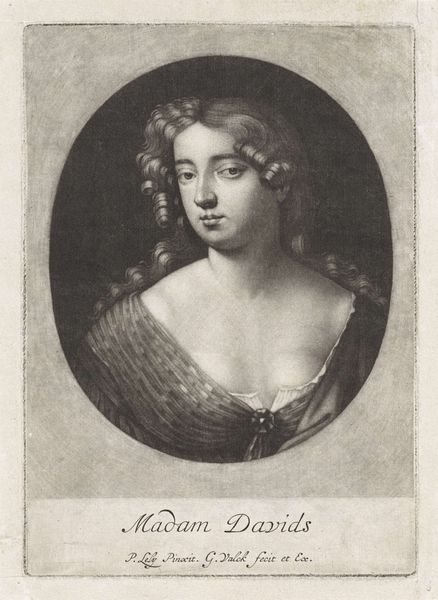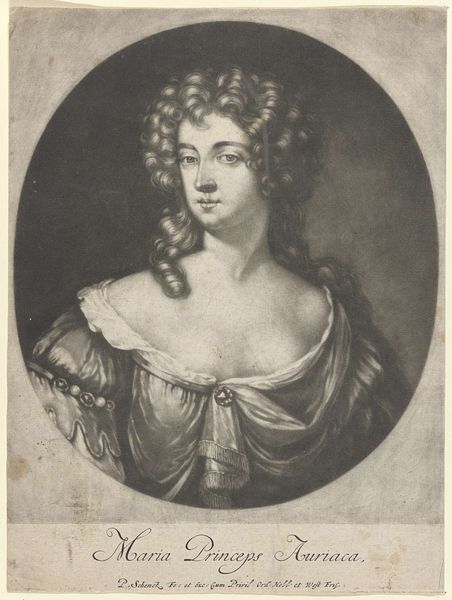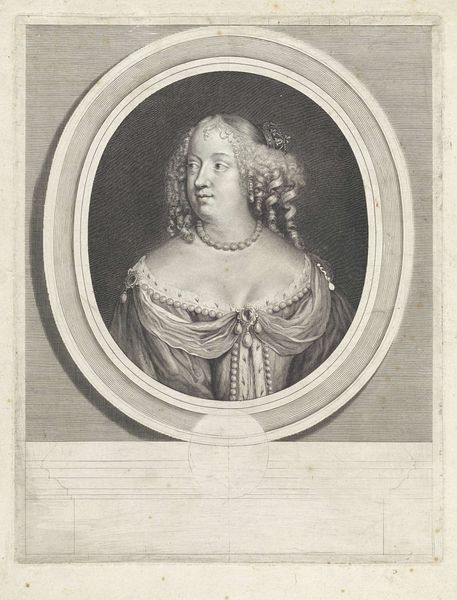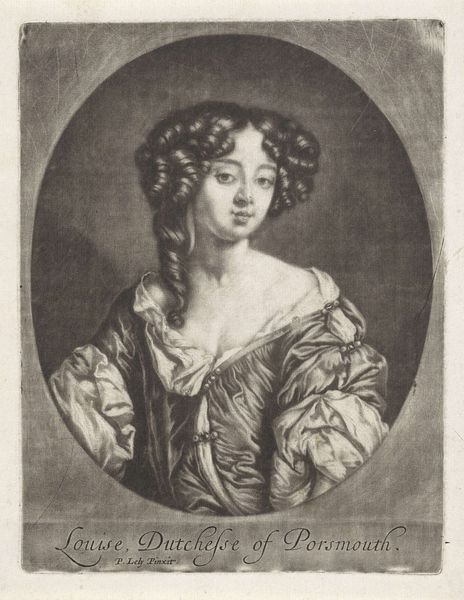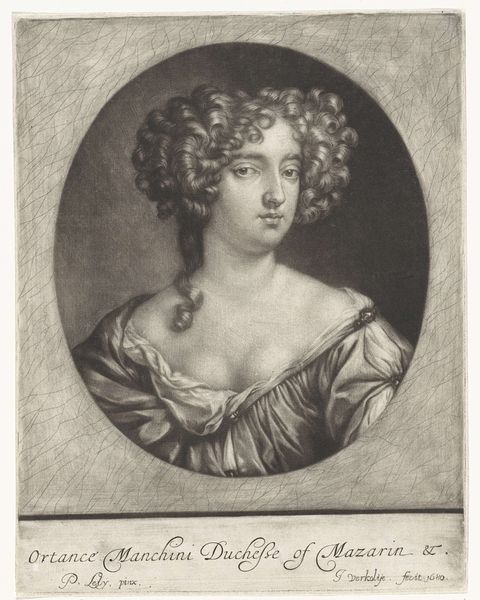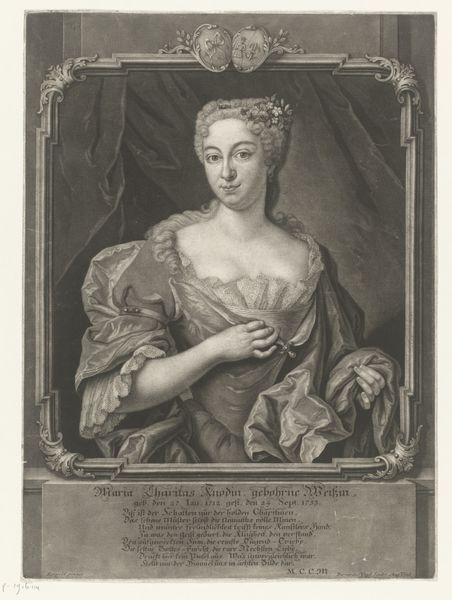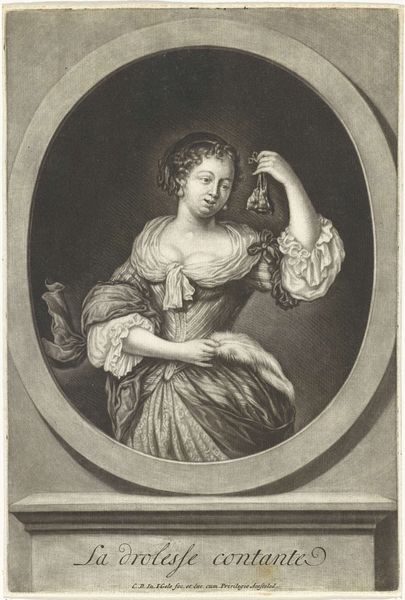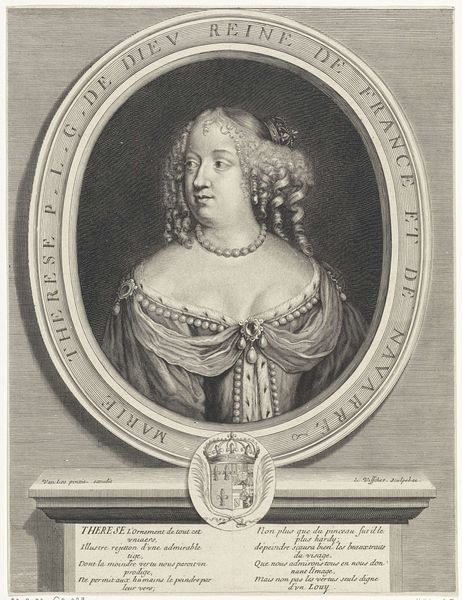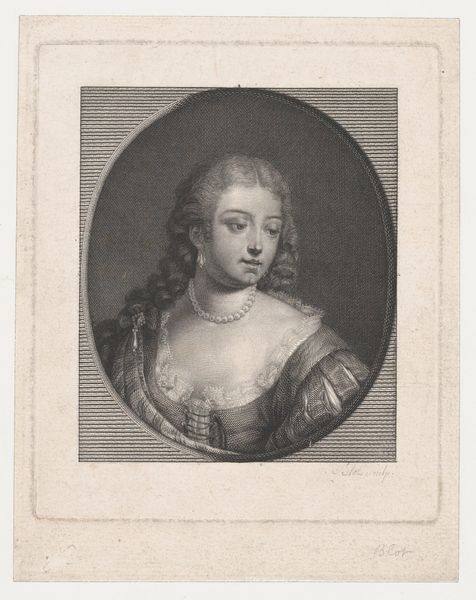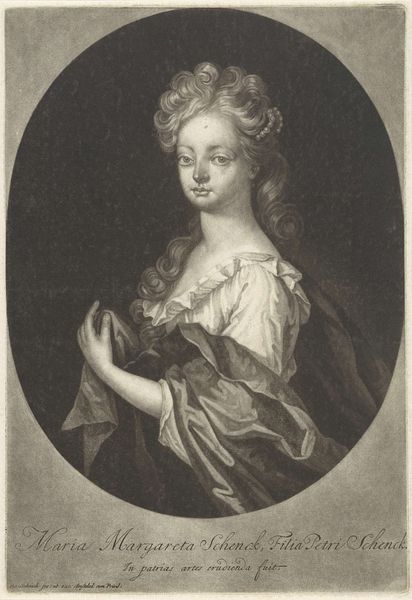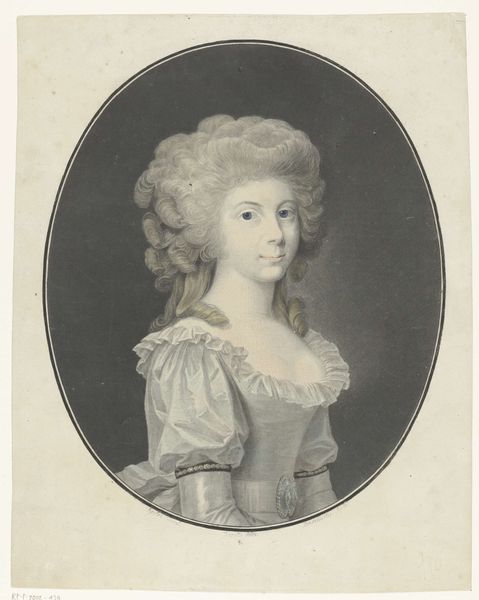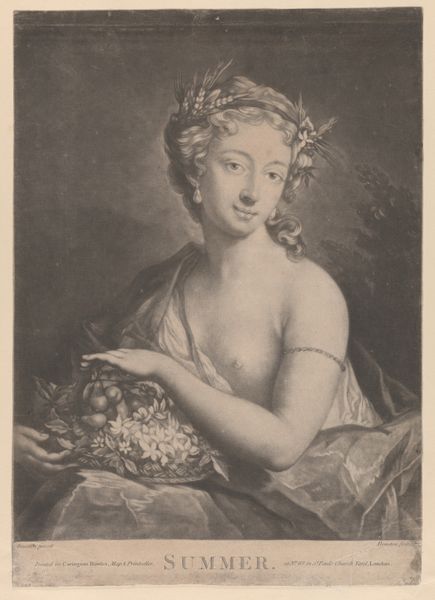
engraving
#
portrait
#
baroque
#
charcoal drawing
#
history-painting
#
engraving
Dimensions: height 210 mm, width 156 mm
Copyright: Rijks Museum: Open Domain
Editor: Here we have Abraham de Blois's "Portret van Mary Davis," created sometime between 1679 and 1709. It's an engraving, and what strikes me first is how the artist uses such fine lines to create soft textures, especially in her hair. What do you see in this piece from a formalist perspective? Curator: The first element that strikes me is the stark contrast within the oval format, specifically the dark background versus the luminous quality of the figure's skin. The artist's employment of chiaroscuro – the stark juxtaposition of light and dark – defines the spatial relationships within the composition. Editor: That's interesting. I was focusing on the details, but the starkness you mention gives it a lot of its power. It's like she's emerging from the darkness. Curator: Precisely. Note how the artist meticulously renders the fabric of her gown; see the intricate rendering giving volume and dimension. Observe the texture in the fabric is more detailed compared to that of her skin, a deliberate compositional choice. Also, consider the direction of the light source. Where do you perceive the light originates and how does it sculpt the figure? Editor: It seems to be coming from the left, highlighting her face and chest, creating highlights along her jawline, illuminating her face more directly. Curator: Indeed. And how does the framing oval itself function? Is it merely a boundary or does it play a more active role? Editor: It almost feels like a window or a mirror, focusing our attention intensely on her expression. I guess I didn’t really consider that at first. Thanks! Curator: Indeed, the visual framing is part of its significance. I find something new each time I consider it.
Comments
No comments
Be the first to comment and join the conversation on the ultimate creative platform.
